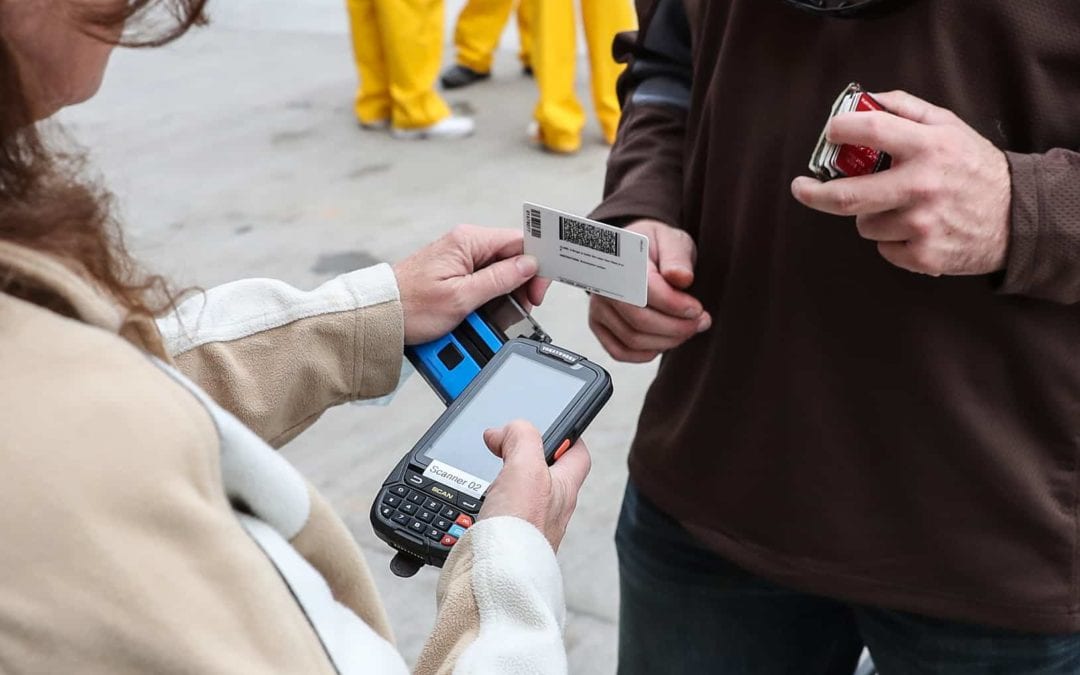When a bar, casino, liquor store or convenience store decides to purchase an ID scanner to verify customers’ age, they must take into account some important factors to make sure they get the right product at the right price.
Often times, a business purchases the wrong type of ID scanner and uses it inconsistently. In order to take full advantage of the protections and benefits of an ID scanner, the ID scanner must be used in every transaction.
Below are 5 very important factors to ensure you’re buying the best ID scanner for your business.
1. What type of IDs can the ID scanner read?
Business owners often choose the wrong scanning technology when they purchase an ID scanner. It is imperative to get an ID scanner that can read every license and ID a business will typically encounter.
In the United States, all driver licenses have a scannable 2D barcode, although some states still include the magnetic stripe as well. The barcode or magnetic stripe contains the age and address information stored on the card. Barcodes and magnetic stripes require different types of scanners to decode the data.
Some ID scanners contain both types of scanners on one device, while other ID scanners only contain one type of scanner.
Therefore, most businesses should purchase an ID scanner that reads both magnetic stripes and barcodes. This will give them the widest and most thorough range of cards they can scan. Only in rare instances will a business need an ID scanner that only reads magnetic stripe IDs. These are usually small local businesses in states with only magnetic stripe licenses that only serve local customers.
2. Where does age need to be verified?
The placement of an ID scanner can have a big impact on how consistently it is used.
For instance, bars and nightclubs typically need a battery-powered, mobile, handheld ID scanner that a bouncer can use at the door. However, liquor stores and convenient stores usually need a stationary ID scanner that plugs into the wall and is always ready to go.
In short, a business must consider the best place to check IDs before they purchase an ID scanner. A business may need multiple ID scanning units to adequately cover all entrances and checkouts.
3. Can data be stored and retrieved? Does it cost additional money?
Cheap ID scanners simply read an ID and display the age of the patron. More advanced ID scanners can store the data read from the card in built-in memory.
Most businesses opt to purchase a scanner that stores scan data. First and foremost, this data can be used to prove that a particular ID was scanned. This is extremely important for a business to defend itself against citations for selling age-regulated products to minors. Scan time, customer birthday and license number are necessary for the affirmative defense protection offered by many state laws.
While many models of ID scanners store scan data internally, it is important to purchase an ID scanner that also offers the ability to download ID data into a computer spreadsheet. This can be used to build mailing lists, track customer demographics like gender and age, and to study attendance and sale patterns.
Some companies require paid monthly subscriptions or charge service fees to download scan data from an ID scanner. The most reputable companies sell stand-alone machines that do not require any ongoing fees beyond the original equipment purchase.
4. How easy is it to use?
An ID scanner must be easy to use. The screen should be large and have easy-to-read “OK” / “Not OK” warnings. Moreover, the best ID scanners should display a graphic that helps the employee quickly identify the customer’s age and eligibility to purchase age-regulated products. The screen should be backlit if it will be used in a dark environment like a nightclub.

Many poorly designed ID scanners have difficult sequences of buttons to press between scans to reset the scanner. To ensure that every employee can easily use the scanner, there should be no buttons to press between scans. A good scanner takes no more than 1 to 2 seconds for the entire scanning process. Staff members will most likely not use the scanner if it’s too slow. An unused machine leaves a business at risk of citation.
In addition, some companies offer advanced features like customizable sound alarms for underage IDs and configurable age thresholds for unique scanning applications.
When purchasing an ID scanner, look for screenshots of the device being used to make sure the alerts are legible and easy to understand.
5. Is the scanner durable?
High-frequency ID scanning, like a bouncer at a busy nightclub or a clerk at a high-traffic liquor store, puts a lot of wear-and-tear on an ID checker. Therefore, an ID scanner should be able to withstand years of heavy use.
Be weary of models that have protruding wires, external battery packs and oddly shaped brackets. If an employee accidentally drops these products, they will definitely break.
The best ID scanners are made of shock-resistant plastic, have built-in hand straps and screen protectors. Look for a company offering at least a one-year warranty on manufacturing defects.
In conclusion, there are many things to consider when purchasing an ID scanner. In addition to the technical questions – Magnetic stripe, barcode or both? Mobile or stationary? How long do the batteries last? Can I put the data on a computer? Is it easy to use? Will it work after being dropped? – a buyer should purchase a machine that they feel comfortable using and owning. Dealing directly with a manufacturer and avoiding resale middlemen can give the buyer a greater sense of reassurance that concerns can be easily resolved. The best way to protect a business with an ID scanner is to use it consistently. And the best way to use an ID scanner consistently is to purchase the right machine for the job from a reliable company.
Thad Tinkelbaum is an industry expert in the ID scanning technology field. He recommends ID Scanner as a resource for more information.


